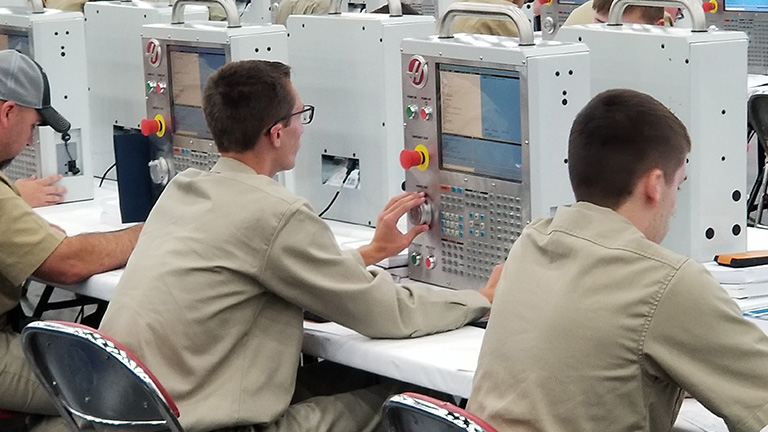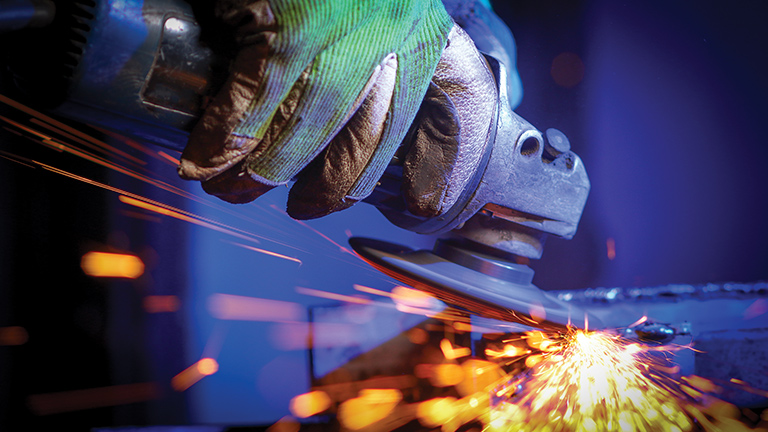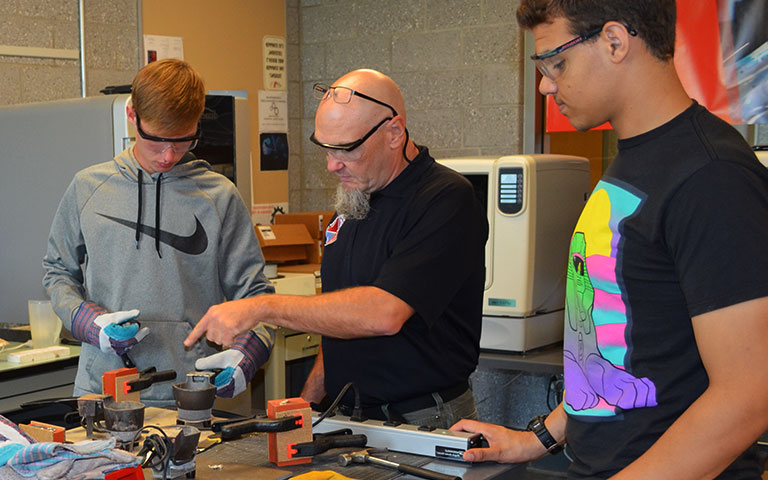 By now we’ve all heard about the impending skills gap in manufacturing — and how the combination of baby boomer retirements, economic expansion and new technology will likely cause some 2 million manufacturing jobs to go unfilled over the next decade. But everyone might not have heard how programs like SME PRIME (Partnership Response In Manufacturing Education) are enhancing the talent pipeline to address skilled trade shortages through tailored curriculum and hands-on training.
By now we’ve all heard about the impending skills gap in manufacturing — and how the combination of baby boomer retirements, economic expansion and new technology will likely cause some 2 million manufacturing jobs to go unfilled over the next decade. But everyone might not have heard how programs like SME PRIME (Partnership Response In Manufacturing Education) are enhancing the talent pipeline to address skilled trade shortages through tailored curriculum and hands-on training.
Consider this: High school graduates have been so effectively encouraged to get a bachelor's degree that they’re not going after plentiful, high-paying jobs — including manufacturing jobs — requiring shorter, less-expensive training. According to The Good Jobs Project, launched in 2017 by the Georgetown University Center on Education and the Workforce, some 30 million good-paying U.S. jobs don't require bachelor's degrees.
For example, the median pay for machinists and tool-and-die makers, who are typically trained on the job, is $44,110 per year. Some of these workers learn through training or apprenticeship programs, vocational schools, or community and technical colleges. Although machinists usually need just a high school diploma, tool-and-die makers may need to complete courses beyond high school.
 In another example, the median pay for welders, cutters, solderers and brazers — who usually need a high school diploma plus technical and on-the job training — is $40,240 per year. Job-seekers in these fields can get formal technical training from high school technical education courses as well as postsecondary institutions such as vocational-technical institutes, community colleges, and private welding, soldering and brazing schools.
In another example, the median pay for welders, cutters, solderers and brazers — who usually need a high school diploma plus technical and on-the job training — is $40,240 per year. Job-seekers in these fields can get formal technical training from high school technical education courses as well as postsecondary institutions such as vocational-technical institutes, community colleges, and private welding, soldering and brazing schools.
Also take into consideration that people with career and technical educations are more likely to be employed than their counterparts who have academic credentials. And they are significantly more likely to be working in their fields of study.
Manufacturing job-seekers and skilled trade workers without bachelor’s degrees can determine the level of economic opportunity available to them across the country by taking advantage of an interactive tool at The Good Jobs Project’s online site, goodjobsdata.org. The project also focuses on the prevalence of good jobs by industry and occupation.
And that brings us back to SME PRIME, which directly enhances manufacturing and engineering talent by establishing current, relevant and applicable manufacturing education in high schools. As part of that, PRIME provides manufacturing equipment, curriculum, materials and supplies, scholarships, camps and academies, student and school credentialing, professional development, marketing and communications, extracurricular programs and events such as Manufacturing Day.
 SME PRIME’s impact is evident, with 84 percent of students in the program pursuing manufacturing careers after graduating from high school. Furthermore, 40 percent of PRIME school students enter the workforce directly, while 60 percent pursue manufacturing-focused STEM degree programs at universities, colleges and trade schools across the country.
SME PRIME’s impact is evident, with 84 percent of students in the program pursuing manufacturing careers after graduating from high school. Furthermore, 40 percent of PRIME school students enter the workforce directly, while 60 percent pursue manufacturing-focused STEM degree programs at universities, colleges and trade schools across the country.
By investing in the SME PRIME program, Fori Automation — in Michigan’s Shelby Township — has made inroads into local schools, where it directs students to its new apprenticeship training program. Initial reports from the new program show a great deal of progress and improvement in attracting talented young people. And apprenticeships provide an accelerated career experience that educates each trainee in disciplines that address Fori’s own skills gap.
That’s known as a win-win situation.

